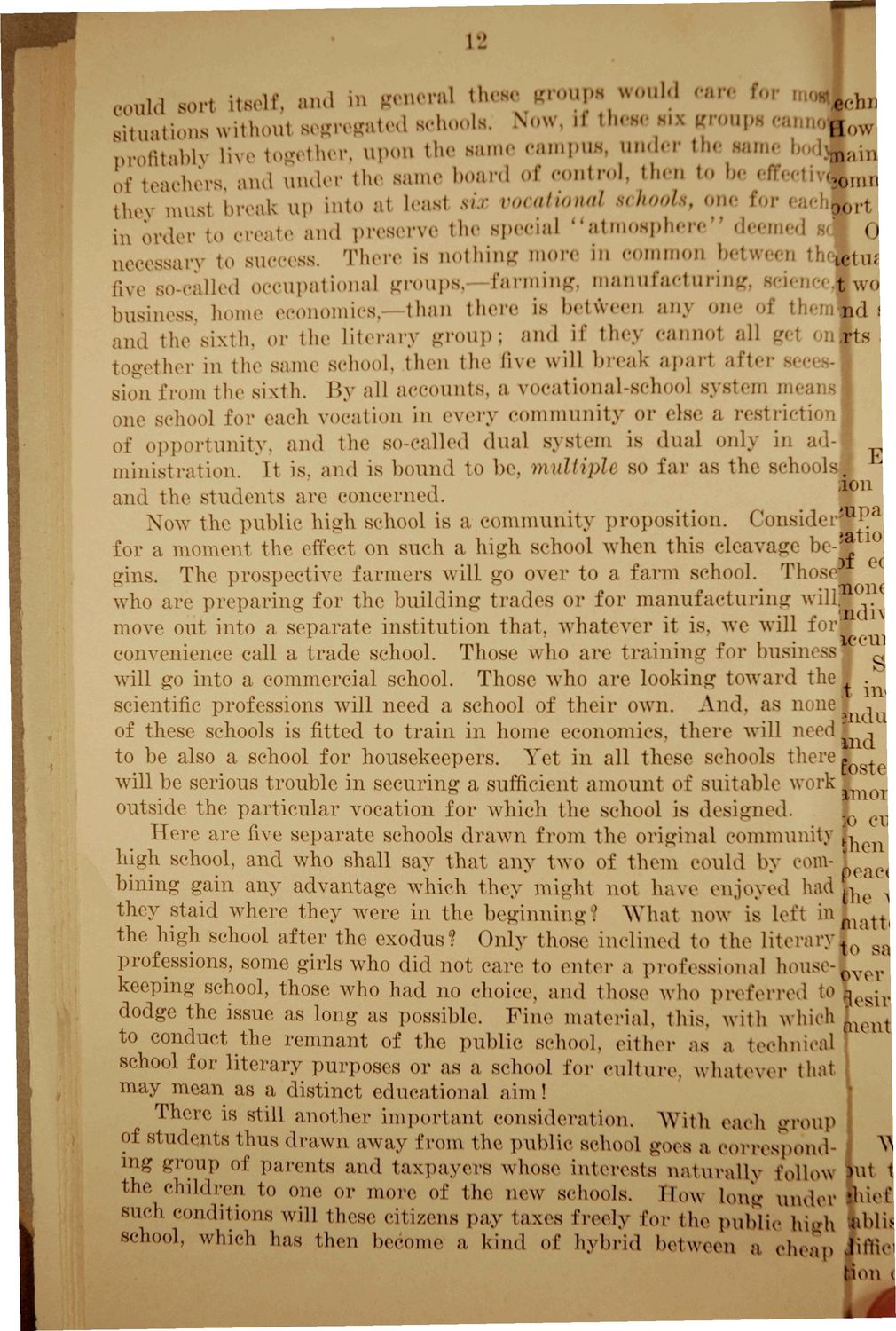| |
| |
Caption: Booklet - What is Involved in a Vocational Education (Davenport) (1915)
This is a reduced-resolution page image for fast online browsing.

EXTRACTED TEXT FROM PAGE:
I'J > sort itself, and in general th< • p W * »M m P i ,.,.,,„ situations without segregated schools. Now, li thes. si roup* ||ovv profitably live together, upon the same campus, under the nam il;tjn < , Iin of teachers, and under the Bame board of control, then i > I. ,-i they must break up into a1 leasl six vocational schools, ne for i oov\ o [n o r d e r t 0 cr( l t e .-u,,! preserve the special "atmosphen ' deemed uecessarj to success. There is nothing more in common bd a th^tm five (-called occupational groups,—farming, manufacturing, ien two business, home ccon..inics, than there is between anj one of t! n ,i . and the sixth, or the literarj group; and if th< cannol all g m,rts, < together in the same school, then the five will break aparl after sion from the sixth. By all accounts, a vocational-school sj teni meai one school for each vocation in every community or else a restrict] o\ opportunity, and the so-called dual system is dual only in adJ ministration. It is, and is hound to he. multiple so far as the schools. ' and the students are concerned. 121 3 Now the public high school is a community proposition. Consider* ? .- • cleavage be-';atio . for a moment the effect on such a high school when this 3 gins. The prospective farmers will go over to a farm school. T h e none ( cou ia who are preparing for the building trades or for manufacturing will. , - • . , - * • -i r% ft '11 move out into a separate institution that, whatever it is. we will for _ convenience call a trade school. Those who are training for business ~ will go into a commercial school. Those who are looking toward the i in scientific professions will need a school of their own. And, as none^ . u of these schools is fitted to train in home economics, there will n ^ , -j to be also a school for housekeepers. Yet in all these schools there. , e will be serious trouble in securing a sufficient amount of suitable work imor outside the particular vocation for which the school is designed. :o cu Here are five separate schools drawn from the original community ' high school, and who shall say that any two of them could by com- " ^ billing gain any advantage which they might not have enjoyed had ^ * n they staid where they were in the beginning? What now is left » niatt< the high school after the exodus? Only those inclined to the literary 0 sa professions, some girls who did not care to enter a professional house- ver ^ t0 keeping school, those who had no choice, and those who preferred ^osir dodge the issue as long as possible. Fine material, this, with which m o n t to conduct the remnant of the public school, either as a technical school for literary purposes or as a school for culture, whatever that may mean as a distinct educational aim! There is still another important consideration. With each group I of students thus drawn away from the public school goes a correspond- ] ^ mg group of parents and taxpayers whoso interests naturally follow Hit t the children to one or more, of the new schools. How long under Jhief such conditions will these citizens pay taxes freely fov the public high ubli* school, which has then become a kind of hybrid between a cheap Jiflioi lion (
| |